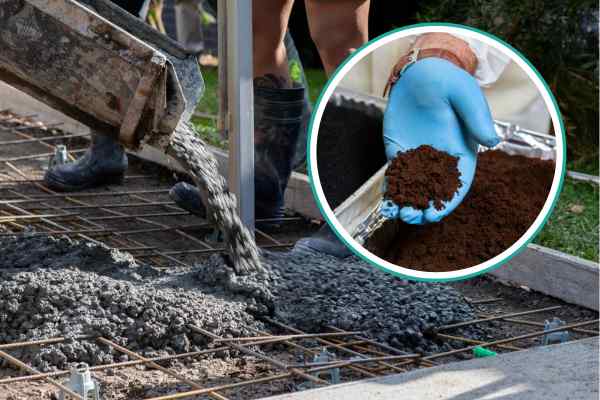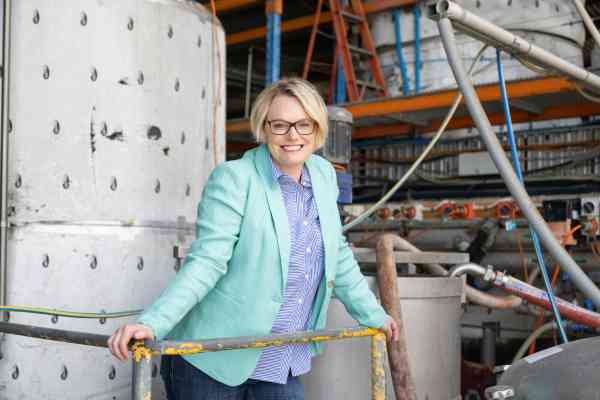When coffee met concrete
Spent coffee grounds become an unlikely ingredient for greening city footpaths.

A new blend of coffee is hitting the streets, but this brew is part of trial to build concrete paths that could help to reduce waste going to landfill.
An astonishing 75 million kilos of ground coffee waste is generated in Australia every year with most sent straight to landfill where it will emit greenhouse gases, according to RMIT University researchers.
A key component of concrete is the sand extracted from river beds and banks which is also a known environmental issue. And as it becomes more difficult to source, RMIT wants to prove that discarded coffee grounds can offer a workable alternative.
With this in mind, the university is running the world’s first trial of concrete made with spent coffee grounds in collaboration with Macedon Ranges Shire Council in Victoria.
Dr Rajeev Roychand and his colleagues from RMIT's School of Engineering say their aim is to transform this waste steam into a valuable resource for the construction industry.
We’re not only looking into coffee – we're expanding this into all forms of different organic waste.
The spent coffee grounds must first be transformed into biochar to prevent the organic waste in the raw product decomposing over time and weakening the building material, according to the researchers.
To create biochar, they developed a low-energy technique which the researchers say also has the capacity to make concrete 30% stronger.
This will also replace a portion of the river sand used to make concrete, with both coffee-based biochar and woodchip-biochar being trialled in concrete footpaths in the Victorian town of Gisborne.
“Sand is getting scarce over time, and this waste can replace up to 15% of the sand in concrete,” Roychand says.
Once the footpaths are complete, RMIT researchers will test them to see how they stand up to everyday use. Macedon Ranges Council’s director of assets and operations Shane Walden says the new ingredients won't change the look and feel of the town's footpaths.
“Despite the fact that we're using coffee grounds or mulch, residents aren't going to really see or smell any difference in this concrete product.”
Brewing big
Once the footpath trial is complete, Roychand says, the aim is to broaden the scope to include commercial applications. “We’re not only looking into coffee – we're expanding this into all forms of different organic waste,” he says.
“Every biochar produced from a different organic material comes with varying composition, in addition to the difference in carbon content, particle size and absorbency, that can boost the performance of concrete in a range of ways.”
It is hoped that by using the biochar from organic waste, the researchers may also find ways to reduce the amount of cement used in the process, which could in turn cut costs.
The RMIT team has partnered with Australian-owned civil infrastructure company BildGroup to deliver the project in Gisborne as well as other planned infrastructure projects around the state of Victoria.

RMIT Engineers have found a way of making concrete stronger with spent coffee grounds while at the same time replacing 15% of the sand that is traditionally used in the process. Before they can be used, the coffee grounds must first be transformed into biochar in what RMIT researchers describe as a low-energy process that involves heating organic waste in the absence of oxygen at 350℃ which results in a 30% stronger concrete.





